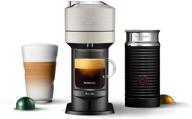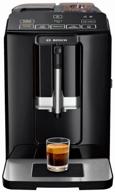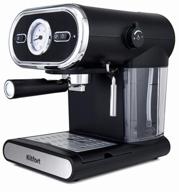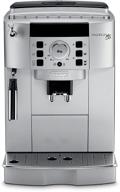
Review on ☕️ Premium Stainless Steel Gooseneck Kettle with Thermometer - Ideal for Pour Over Coffee, French Press, and Tea - 40 fl oz Capacity - Compatible with Stove and All Heat Sources by Jeff Clites

Well made for the price and exceeds expectations once you understand what you are buying
So I read the negative reviews before buying. This is where some of the useful information is sometimes hidden. I found a metallic smell that I associate with industrial metalworking lubricants. It withstood washing or boiling, but rinsing with 99.9% isopropyl alcohol removed all traces of the odor. The spout WILL splatter if you let the heat source heat it up. So if you have a gas torch, don't let the flame heat the spout. If the spout is not heated, it will not splash, if the spout is heated, the kettle will be empty in 4-5 minutes. There is a ferromagnetic ring in the bottom seam to allow this kettle to be heated on induction hobs. . This ring is probably steel wire and /will/ rust. ALL stainless steel kettles have this feature, and when water and air touch this steel ring, some rust will form. This is normal and occurs in most stainless steels with rounded edges or rolled seams where 90% steel wire is present. This does not mean that your kettle is defective. As for the commonly reported leaks at the base of the spout, it is a simple compression connection so if mishandled this type of kettle will eventually fail. But it may also leak from a new one if it falls off during transportation. Do not attempt to twist or bend the spout in any way as this will most certainly strain the connection and cause leakage. We buy it for the sink, but it's also a weak point. Just as a spout will splatter when you heat it, the handle and lens of a thermometer will splatter. The handle gets hot if the flame is too high and the thermometer lens is regular polycarbonate so excessive heat will destroy it, but you have to apply too much heat to do that. Some electric ranges don't have enough small burners for this kettle and for gas you will need a small burner if you have one. For induction heating, none of these issues are a problem. Thermometer. First, people ask if that's right. At room temperature, the reading is 6 degrees Fahrenheit higher. But when it comes to cooking, everything is fine. We value accuracy near boiling, so calibrate based on that. Calibrating or checking a thermometer is the easiest thing in the world. First find out your local altitude and find the actual boiling point for your altitude. Secondly, take a bath with water and ice cubes and leave it on for 5 minutes. This water/ice mixture is always exactly 32*F/0*C, and the boiling point is always the temperature you were looking for in the first step. These reference points are the source of all standards and can be established without special laboratory equipment. Because I found that the thermometer doesn't have a perfectly linear temperature response at low temperatures, and because I'm most interested in the boiling point, I just focused the calibration on boiling and found it to be accurate. But to be clear this is a rapid boil, the first sign of boiling was below boiling point so you need to look for the point where the temperature stops rising and a LOT of steam comes out under pressure. And one more comment. green line on the thermometer. For most teapots, this is red or yellow, not green. You must be above or below green to brew coffee, green denotes poor temperatures, not desirable. Many pros suggest staying under green, but in general coffee works over green too. Also, I always add some water before pouring the coffee as the water in the spout can be colder than expected and depending on what you're doing it can be a significant amount of cold water for your pre-brew. Bottom line, this is a cheap kettle and better is better not enough to justify the cost. All kettles like this are cheap even if they have a higher price. The thermometer comes in handy as it can tell me how long I'll be waiting. I expect it to start leaking the first time it falls or when a young person tries to twist or bend the spout. But I would expect that from more expensive brands as well. Would I buy it again if/when it starts leaking, probably yes (although I might try silver soldering it to stop the leak rather than replacing it).
- Easy to set up
- There are other interesting options.
New products
Comments (0)
Top products in ☕️ Coffee, Tea & Espresso
Another interesting products

2-Pack European Grade Silicone Bunte Cake Pan Set - Non Stick Bakeware Fluted Tube Mold For Jello, Gelatin & Cakes | 9 Inch Baking Pans | Aokinle | BPA Free

38 Review

4 Pack 12 Inch Stainless Steel Round Pizza Baking Pan Tray Crisper Sheet Oven Cooking Healthy For Pizzas - Deedro

47 Review
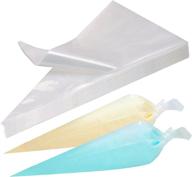
100-Pack Of Disposable 18-Inch Piping Bags For Cake, Cupcake, And Cookie Decorating - Perfect For Icing And Frosting!

41 Review

PME Scriber Needle Modelling Tool, For Cake Decorating, 5.7-Inch

38 Review


